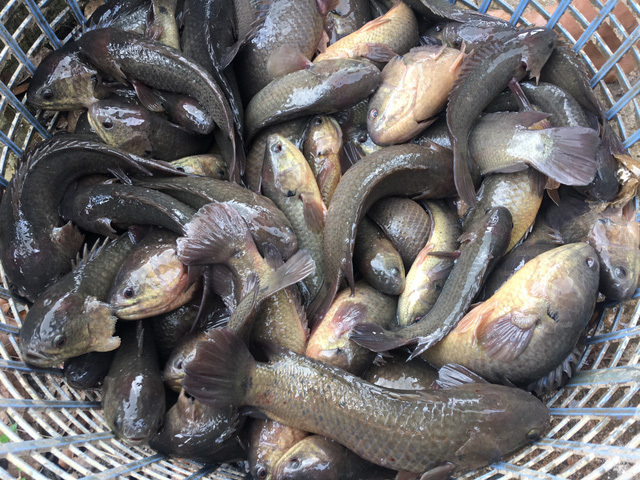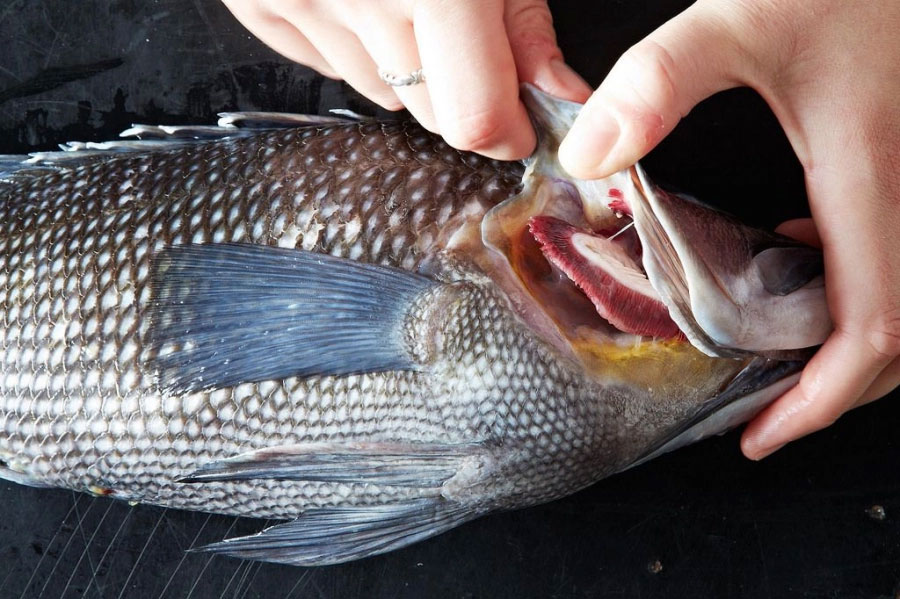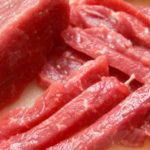1. Choose Delicious Wild Fish
Appearance:
Wild fish: Dark and sleek, slim and very healthy, rarely staying still in the seller’s tray. Even the larger ones are only slightly bigger than three fingers put together. The fish body is slightly round, very healthy, rarely staying still in a tank or tray. When living in a tank with little water, they exhibit no signs of weakness; if they do, just touch them and they will immediately react.

Farmed fish: Dark gray skin, very big and plump, weighing a considerable amount, around 300g/fish, with some weighing over 1/2kg. When observing the fish on the tray, you will see that they only slap their white tail on the tray and cannot jump high.
Price:
Wild fish: Since wild fish are caught, the quantity is limited and the price is generally much higher than that of farmed fish. Currently, the price per kg of wild fish is around 80,000 VND to 100,000 VND/kg.
Farmed fish: There are more farmed fish compared to wild fish due to the farming practices, so the price of farmed fish is lower, about 1/3 of the price of wild fish. Currently, the price per kg of farmed fish is around 50,000 VND to 60,000 VND.
Meat quality:
Wild fish: Due to their small body and short fins, there is very little meat in wild fish. The meat of wild fish is very fragrant and delicious, but mostly consists of fish bones. Therefore, wild fish are usually used to make dishes such as grilled fish, fried fish, fish soup… especially fish soup with cabbage is considered to be a very useful method to reduce alcohol effect, relieve headaches…
Farmed fish: They have more flesh, but the meat is not as fragrant as wild fish. Due to their large and plump body, it is easy for users to separate the fish meat, but generally, both farmed and wild fish have a lot of bones.
2. Secrets to Choose Fresh and Delicious Fish
Choose the whole fish
Choosing a whole fish is much easier. The key to cooking a delicious meal with fish is to start with the freshest fish possible. If you trust your senses along with the following instructions, you will surely have a great meal with the best seafood or river fish.
Look at the fish’s eyes
Look at the fish’s eyes, if the eyes are not cloudy, bright and slightly bulging, that means the fish is fresh.
Fish scales
A fresh fish should shine – literally and figuratively. If the fish still has scales, they must be bright and metallic, not dull. The scales should be tightly layered, like roof tiles. Avoid any fish that is missing scales, as that is a sign that it has been dead for a long time and is no longer fresh. If the fish is a scaleless type, make sure the skin is shiny and wet, not discolored or dull.
Fish meat should be firm

Fresh fish has firm meat and is almost like rubber. If the meat feels soft or mushy, it is not fresh. If pressed lightly, the meat bounces back and leaves no dent, indicating that the fish is fresh. The skin of fresh fish should be firm and not torn.
Smell it
We have looked and touched to determine if the fish is fresh, now let’s move on to smell. Take a deep and strong sniff, do not hesitate. Saltwater fish will have a sea-like smell, while freshwater fish will have a smell like a pond. On the contrary, if a fish has a fishy smell, it means it is starting to go bad. If you detect an ammonia odor, that is another sign that the fish has not been fresh for a long time.
Source: Khoevadep
Expert Advice on How to Identify Unsafe Food
Are you aware of how to inspect food for possible safety risks? With the presence of food products from unclear origins and chemicals used as preservatives, it is important to be vigilant in selecting food items for our families. Join us in the Food Tips section to take a closer look at how to select safe and healthy food for our families!



































